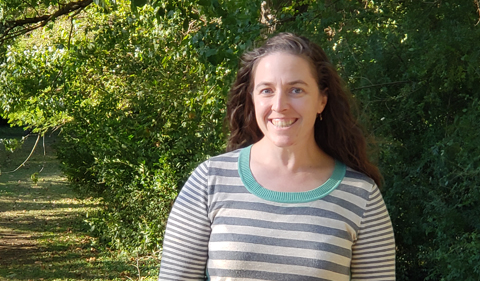
Dawn Ruth, Visiting Assistant Professor of Geological Sciences
Dr. Dawn Ruth recently joined the faculty of Geological Sciences at Ohio University as a Visiting Assistant Professor. Ruth’s work focuses on deciphering magmatic processes before volcanic eruptions.
Ruth applies the same enthusiasm to her research and her classroom. She is teaching GEOL 1010: How the Earth Works and GEOL 3120: Earth Materials and Resources. This semester she is also offering a course in Volcanology (GEOL 4900/5900), where she gets to delve deeper into exciting topics related to volcanic activity.
For example, she studied the timing and specifics of magma mixing before the 2008 eruption of Llaima volcano in Chile.
“I study volcanoes that experience persistent activity in the form of degassing and frequent eruptions,” Ruth says. “During my master’s work at New Mexico Tech, I studied the gas emissions from Erebus volcano (Antarctica) using remote sensing techniques. Erebus is a unique system in that it allows us to determine the gas output of a volcano to the atmosphere in a setting with very limited human input. For my PhD, I returned to geology and petrology to study the triggers and factors that affected the 2008 eruption of Llaima volcano in Chile.”
“The results of my dissertation work allowed me to build a conceptual model of the timing and nature magma supply and eruption triggering at a persistently active system. I applied and expanded this model my postdoctoral work at the Earth Observatory of Singapore. While there, I studied the repetitive eruptions of Mayon volcano to determine the timing of magma injection and mixing. These volcanoes erupt so frequently, it can become a significant hazard to local populations. With better models of magmatic processes, we might, in the future, be able to forecast eruptions.”
“I am wrapping up the work I started in Singapore and hope to have a paper finished in the coming months. This work has been exciting in that it has inspired new projects looking into magma mixing timescales. For example, I currently have an OHIO undergraduate working with me to build a database of mixing timescales. With that she will do a statistical analysis to see if there are specific parameters related to mixing rates” she says.



















Comments